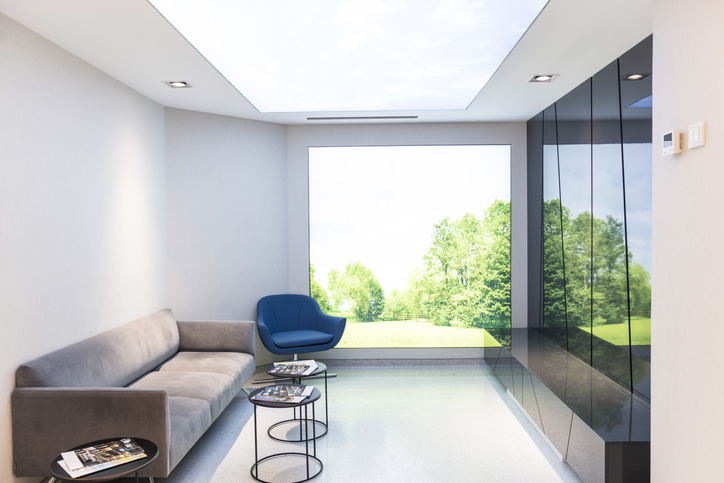Wrinkles and sagging are natural phenomena that appear with age, but their effects affect not only our appearance but also our self-confidence. Here we analyze the causes of wrinkles and sagging skin, and introduce multifaceted remedies ranging from simple measures in daily life to specialized cosmetic treatments. Together, we will explore the secrets to combat skin aging and maintain youthfulness.

Graduated from the Faculty of Medicine, National Kumamoto University. After serving as the director of major beauty clinics in Japan, etc., he opened Aladdin Aesthetic Clinic in 2023. He is a professional in aesthetic medicine with a doctorate in anti-aging research and many years of experience. With the motto of "Toward the realization of cosmetic medicine without lies," he aims to be the "Only One" together with his patients.
Causes and Mechanisms of Wrinkles and Sagging

Our skin changes as we age, and the appearance of wrinkles and sagging skin is a natural phenomenon. These changes are largely dependent on our daily lifestyle, diet, and the skin's natural aging process.
Skin aging is the result of a combination of biological and environmental factors. This process is specifically related to the production of collagen and elastin in the skin. These are the skin's most important structural proteins and are essential for maintaining skin elasticity and hydration.
Role and decline of collagen and elastin
Collagen is a protein that provides strength and density to the skin and makes up the bulk of the skin. Elastin provides flexibility and elasticity to the skin.
As we age, the natural production of these proteins decreases, as does communication between cells. This leads to reduced cellular repair capacity and weakened skin resilience, making wrinkles and sagging more likely to occur.
Loss of skin elasticity and moisture
Decrease in collagen and elastin directly leads to loss of skin elasticity and hydration. Fine wrinkles form on the superficial layers of the skin, while deeper wrinkles and sagging become more pronounced. This is due to the weakening of the skin's support structure and the tendency of the skin to droop under the influence of gravity.
Characteristics of aging in specific areas
Wrinkles and sagging are especially noticeable in areas of the face where there is a lot of movement (e.g., the mouth, armpits, and neck). This is because these areas are frequently stretched and contracted by the movements of the facial muscles.
This continuous movement stresses the collagen and elastin fibers, making these fibers more susceptible to damage over time.
Lifestyle influences
Let's look at the effects of lifestyle habits. Smoking and excessive sun exposure accelerate skin aging and lead to a decrease in collagen and elastin. These proteins are essential in maintaining skin elasticity and structure.
Inadequate sleep and high stress levels also interfere with the skin repair process and accelerate the formation of wrinkles and sagging skin. Ensuring quality sleep is critical to skin health, as skin cells are actively repaired and regenerated during sleep.
Dietary and nutritional traps that promote wrinkles and sagging

Daily diet plays a major role in the development of wrinkles and sagging skin. In particular, there are several dietary habits that negatively affect skin health.
Excessive intake of sugar and processed foods
Sugar and processed foods can accelerate skin aging. These foods are high in sugar and cause a process called "glycation" in the body. Glycation accelerates the deterioration of collagen and elastin, causing wrinkles and sagging skin. In addition, these foods often contain fats and additives that are harmful to health.
High-fat, high-salt diet
High-fat and high-salt diets adversely affect the skin's moisture balance and promote the formation of wrinkles and sagging skin. Excessive salt intake can upset the body's water balance and cause skin dehydration. On the other hand, excessive consumption of unhealthy fats (especially trans and saturated fats) can cause skin inflammation and accelerate the aging process.
Excessive alcohol consumption
Alcohol causes dehydration and inflammation of the skin. Frequent alcohol consumption dehydrates the skin and promotes the formation of wrinkles and sagging skin. Alcohol can also reduce levels of vitamin A, which plays an important role in the skin's ability to regenerate itself.
Excessive caffeine intake
Excessive consumption of caffeine-containing beverages such as coffee and energy drinks has also been linked to skin dehydration. Caffeine is a diuretic and can affect the body's water balance, resulting in skin dryness.
You can take measures in your daily life! How to Improve Wrinkles and Sagging

Wrinkles and sagging skin are inevitable signs of skin aging for many people, but there are many effective ways to improve them. It is important to choose the best approach to achieve beautiful, healthy skin.
From routine skin care to specialized cosmetic treatments to nutritional measures, here are a variety of ways to address wrinkles and sagging skin.
How to choose cosmetics and serums
The first step in improving wrinkles and sagging skin is to select cosmetics and serums that contain effective ingredients. Notable ingredients include hyaluronic acid, retinol (a vitamin A derivative), peptides, antioxidants (vitamins C and E), and glycolic acid.
These ingredients help retain moisture in the skin, promote cell regeneration, and assist in collagen production, contributing to the improvement of wrinkles and sagging skin. In selecting a product, it is important to choose one that is appropriate for your skin type and specific skin concerns.
Cosmetic treatment options
Cosmetic medicine offers a variety of wrinkle and sagging treatment options. Dermapen and Milan RePeel, as well as other laser treatments, smooth surface wrinkles and improve skin texture.
Injectable treatments, such as hyaluronic acid and Botox, reduce the appearance of certain wrinkles and rejuvenate the skin's appearance. Lift-up procedures such as thread lifts address more serious sagging and improve facial contours. It is important that these options be selected in consultation with a specialist according to individual needs and expectations.
Dietary and nutrient recommendations
| nutrient | role | Food Examples |
|---|---|---|
| antioxidant | Promotes skin cell repair. Enhances elasticity. | Vegetables, fruits (berries, citrus), nuts, whole grains |
| omega-3 fatty acid | Prevents skin moisture and moisture loss. | Salmon, tuna, flaxseed oil |
| Vitamin A and Zinc | Skin growth and repair. Skin wound healing. | Red meat, legumes, nuts, seeds |
Proper diet and nutrient intake are essential for improving wrinkles and sagging skin. Incorporating antioxidant-rich foods (e.g., vegetables, fruits, nuts, whole grains) into the daily diet can help maintain skin health.
Foods high in omega-3 fatty acids (e.g., salmon, flaxseed oil) also help keep skin hydrated and reduce inflammation. Adequate water intake is also important to keep skin hydrated.
What are the possible risks of cosmetic medical treatment of wrinkles and sagging skin?

While there are many cosmetic medical options available to treat wrinkles and sagging skin, it is important to understand that these treatments come with risks and side effects. Before choosing a treatment option, a detailed consultation with a specialist is important. It is essential to fully understand the treatment options, the results that can be expected, the possible risks and side effects, and to choose the best treatment for your individual situation.
When undergoing treatment, it is important to follow risk management and aftercare instructions. By following your specialist's instructions and properly providing the necessary care, you can minimize the risk of side effects. Below is a detailed description of common treatment procedures and the possible risks and side effects associated with them.
laser therapy
Laser treatment is effective in improving wrinkles and skin texture, but may cause side effects such as redness, swelling, itching, and temporary pigmentation.
There is also a risk of infection of the treated area and, in rare cases, scar formation. After treatment, it is important to avoid sun exposure and to follow the skin care instructions thoroughly.
Injection therapy (hyaluronic acid, Botox)
Hyaluronic acid and Botox injections are generally safe treatments, but there is a risk of swelling, internal bleeding, and infection at the injection site. In the case of Botox, in particular, unnatural or asymmetrical facial expressions can occur if the procedure is not performed properly. The experience and skill of the practitioner are important factors.
Lifting Surgery
Lift-up surgery, such as a thread lift, is an effective way to address more severe sagging, but the procedure comes with common risks. These include bleeding, infection, anesthesia-related complications, and swelling and pain during the recovery period. There is also the rare possibility of scarring and asymmetry.
summary
Through this article, we hope you have gained a comprehensive understanding of wrinkles and sagging skin and learned about the diverse ways to improve them. From modifying your daily lifestyle to the latest cosmetic treatments, it is important to choose the right measures for you. Always take care of your own health and beauty, and confront skin aging with confidence. We hope this information will help you in your bright future.
At Aladdin Aesthetic Clinic, based on our many years of experience in cosmetic medicine and cosmetic dermatology and the knowledge of our doctoral degree, we provide counseling that aims to be "only one", offering the best treatment for each person we meet. We offer only the necessary treatments without any unnecessary information or suggestions.
Feel free to use our official LINE account for 24-hour counseling and reservations. Please feel free to contact us for free counseling for the first time or if you have any concerns.





